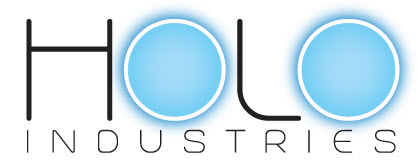Latest News, Uncategorized
Holograms: The wave of the future for hospitality
In 2014, Michael Jackson “performed” at the Billboard Music Awards, five years after his death. How was that possible? A hologram of the King of Pop was created complete with dance moves, which was synced with a backing track. Holograms have been used in the music business so all fans can “see” their heroes perform long after they’re gone, but the technology has practical use in the hotel industry, such as for hybrid meetings and the check-in process.
ARHT Media is using the technology to create HoloPresence for meetings and events, where speakers, who could be miles away, can “be” in the room listening and interacting with attendees, while Fácil by Arribatec Solutions and Holo Industries have developed the first holographic check-in kiosk.
According to Larry O’Reilly, CEO, ARHT Media, his company is the global leader in HoloPresence (holographic telepresence) technology. ARHT’s complete end-to-end solution allows for the capture, transmission and display of presenters who want to appear remotely as lifelike holograms for live interactions with an audience of any size in real-time with little to no latency.
“Our technology helps eliminate the barriers of time and geography by helping presenters reduce their travel and still appear for remote meetings with the same sense of presence as if they were there in person,” he explained. “Presenters can also prerecord a hologram of themselves for playback on-demand and also use the same solution to appear online in lifelike proportions on our Virtual Global Stage.”
Speakers are able to “meet” with the audience through either a HoloPresence Display or the Virtual Global Stage.
“Presenters are recorded using our proprietary Capture Studio System,” said O’Reilly. “They are then transmitted over the internet to our patented HoloPresence Displays and/or to our Virtual Global Stage appearing live as lifelike holograms in life-sized proportions, with the ability to interact with each other and the audience in real-time. While in the Capture Studio being recorded, speakers are able to view the audience through a monitor that is placed in front of them, and also hear the crowd through an earpiece. On the display side, there is a camera that sends an audio and video signal back to the Capture Studio.”
The capital cost of purchasing a HoloPod is $55,000, with about $12,000-$14,000 in recurring costs that cover the annual transmission fees and software maintenance fee related to the ARHT Engine, according to O’Reilly.
ARHT is already working with companies and event organizers all over the world to create holograms. “We have been steadily expanding globally, helping organizations build their own HoloPresence networks so that they can conduct remote meetings as holograms as much as they’d like,” said O’Reilly. “We’ve also worked with a number of event organizers and producers to help them deliver speakers to their events as live and also prerecorded holograms.”
Holographic kiosk
Fácil by Arribatec Solutions has developed the holographic check-in kiosk with Holo Industries’ Holographic Touch. Guests can not only see a holograph—they can safely touch, pinch, scroll and spin any image effortlessly in mid-air, even if the user is wearing gloves.
The collaboration between the companies came about when Fácil sought to create a contactless version of one of its self-service products.
“[We have] been working on self-service solutions for the hotel industry since 2016 and delivered user-friendly solutions to customers before the pandemic,” said Andreas Løseth, product manager, Fácil by Arribatec Solutions. “But after the first wave of the pandemic started to evolve in Europe, we began to look for a solution that either was designed to kill germs and viruses or solutions that didn’t need physical interaction.”
That’s where Holo Industries came in. “[We] started creating our Holographic Touch technology in 2019,” said Glenn ImObersteg, president, Holo Industries. “This arose out of our strategic partnership with a holographic plate manufacturer in Japan and an infrared sensor manufacturer in Europe. We designed a system combining their hardware and a number of other key components and developed the operating software by early 2020 just before the COVID-19 pandemic started. It was good timing and sheer luck to have this touchless solution already prepared.”
A social media post led to the two companies coming together. “We found an advertisement on LinkedIn, where we first got in touch with Glenn and presented our use case for the holographic monitors,” said Løseth. “We quickly realized that this was something that we needed to investigate and ordered a prototype unit as soon as it became available. As soon as the Holo screen is approved, we are ready to start selling the units as part of our self-service kiosk in Europe and the rest of the world where we are present.”
The holographic kiosk, Løseth noted, is “a simplified version of our touch-based kiosk due to the fact that you are interacting mid-air and the screen is smaller than what you usually see in a kiosk. We have solved this by asking guests to do a pre-check-in prior to arrival and they will enter a four-digit code received on SMS into the kiosk for creating the key card. The key cards can be encoded manually or printed to the customer by use of our integrated dispenser.”
The first prototypes of the holographic kiosk were on 8-in. x 8-in. units, which were too small for the functionality Fácil wanted to provide, said ImObersteg, who added, “The new units being delivered this month to Fácil are 10 in x 10 in.; in June, we will be producing both 12 in. x 12 in and 16 in. x 16 in. [versions], which will solve the interaction portion. As for card dispensing, it will be simple enough to integrate that into a unit once Fácil completes its enclosure design.”
